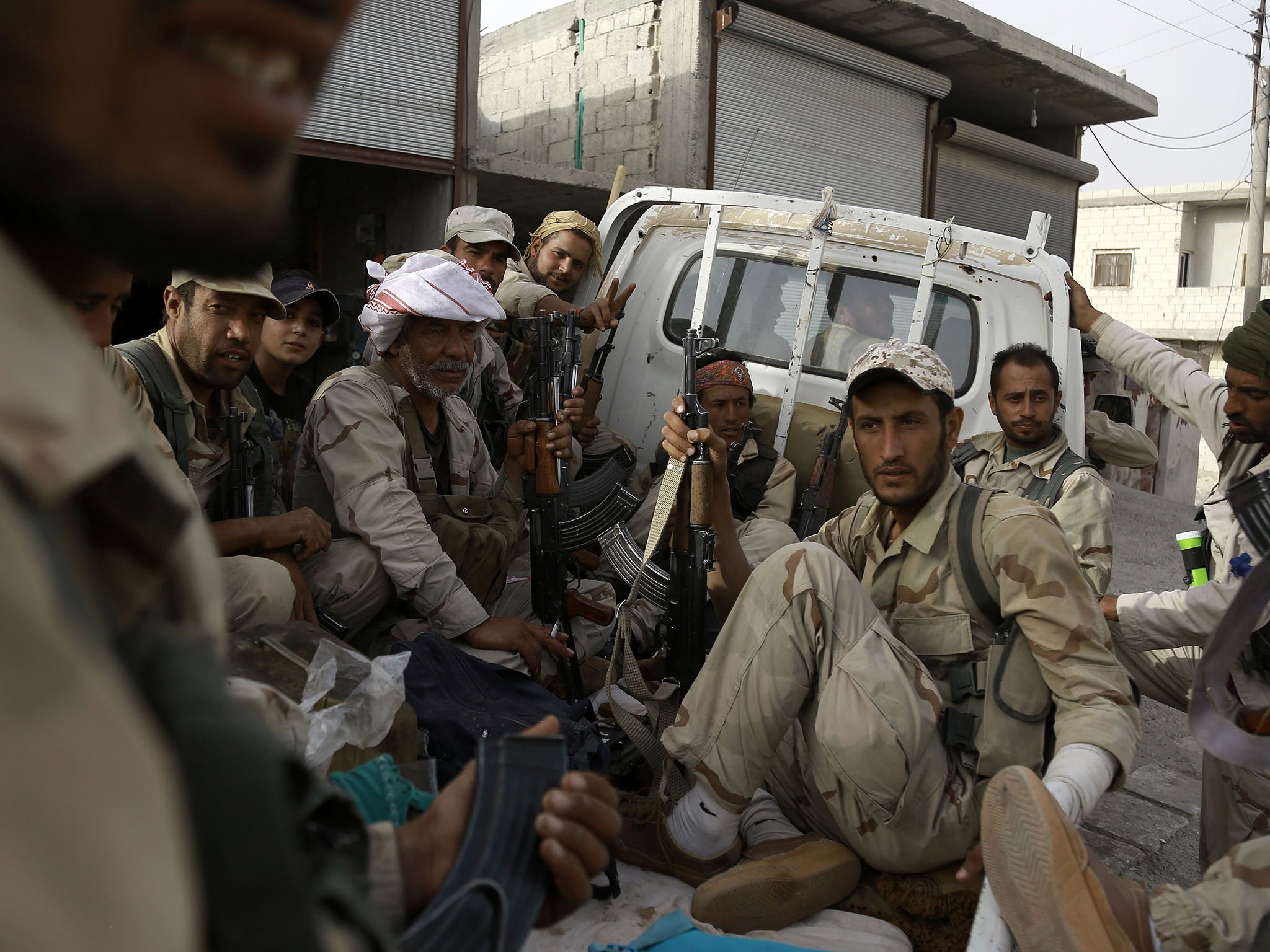Syria conflict: Clashes as US forces ‘enter Isis-held Manbij’
The operation, supported by US-led air strikes, is part of an attempt to take back the so-called Islamic State’s 'centres of gravity' in the region

Your support helps us to tell the story
From reproductive rights to climate change to Big Tech, The Independent is on the ground when the story is developing. Whether it's investigating the financials of Elon Musk's pro-Trump PAC or producing our latest documentary, 'The A Word', which shines a light on the American women fighting for reproductive rights, we know how important it is to parse out the facts from the messaging.
At such a critical moment in US history, we need reporters on the ground. Your donation allows us to keep sending journalists to speak to both sides of the story.
The Independent is trusted by Americans across the entire political spectrum. And unlike many other quality news outlets, we choose not to lock Americans out of our reporting and analysis with paywalls. We believe quality journalism should be available to everyone, paid for by those who can afford it.
Your support makes all the difference.Kurdish and Arab fighters backed by the US have entered Manbij, an Isis stronghold in north Syria, according to the forces and a monitoring group.
Fierce fighting between Syrian Democratic Forces (SDF) soldiers and Isis fighters reportedly erupted at ground level as the rebel alliance penetrated the city on Wednesday.
The offensive operation, supported by US-led air strikes, is part of an attempt to take back the so-called Islamic State’s “centres of gravity” in the region.
Rami Abdel Rahman, the chief of the British-based Syrian Observatory for Human Rights, told Reuters progress into the city would be slow as SDF forces face booby traps “planted by the jihadists to try to prevent the loss of the city.”
Around 8,000 civilians have escaped since the start of the SDF offensive on Manbij on 31 May, although tens of thousands remain trapped inside the city, according to Mr Rahman.
And there were fears Isis would use civilians as human shields inside the city, which had a population of about 120,000 before the start of Syria's civil war in 2011.
Recent strikes in the vicinity of Manbij have targeted headquarters, training bases and ammunition stores held by Isis.
The US-led coalition has been accused of killing at least 15 civilians – including three children – in air strikes on the Isis-controlled territory in Syria’s Aleppo province, near to the Turkish border.
“There is still a civilian population, there are [Isis fighters] in defensive areas and the Syrian Democratic Forces are moving closer to them,“ British Army Major General Doug Chalmers, deputy commander for strategy and sustainment with the US-led coalition, told reporters in Washington via video link.
The forces encountered improvised explosive devices and rocket positions, the official said, as they tried to cut off an area that provides the militants with their main access route to the outside world.
Major-General Chalmers said the SDF fighters were in conflict in western districts of the city.
“The reporting I've had puts them on the edge and the outskirts for some areas which I describe as the outer of the city rather than city proper,” he said.
If successful, the SDF offensive could pave the way for an assault on their Syrian capital Raqqa.
The SDF managed to encircle the city on June 10 but its advance slowed as Isis fought back with almost daily suicide bombings among other attacks.
Isis has held the city of Manbij since 2014, the year the militant group seized control of large parts of Syria and neighbouring Iraq and declared its “caliphate”.
Formed in October 2015, the 25,000-strong SDF is dominated by the powerful Kurdish People's Protection Units and includes an Arab contingent that has been steadily growing to around 5,000 fighters.
As well as air support, coalition countries have provided ground advisors to the SDF, including about 200 US special forces.
Additional reporting by Reuters
Join our commenting forum
Join thought-provoking conversations, follow other Independent readers and see their replies
Comments